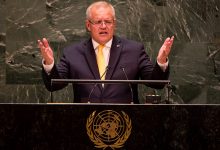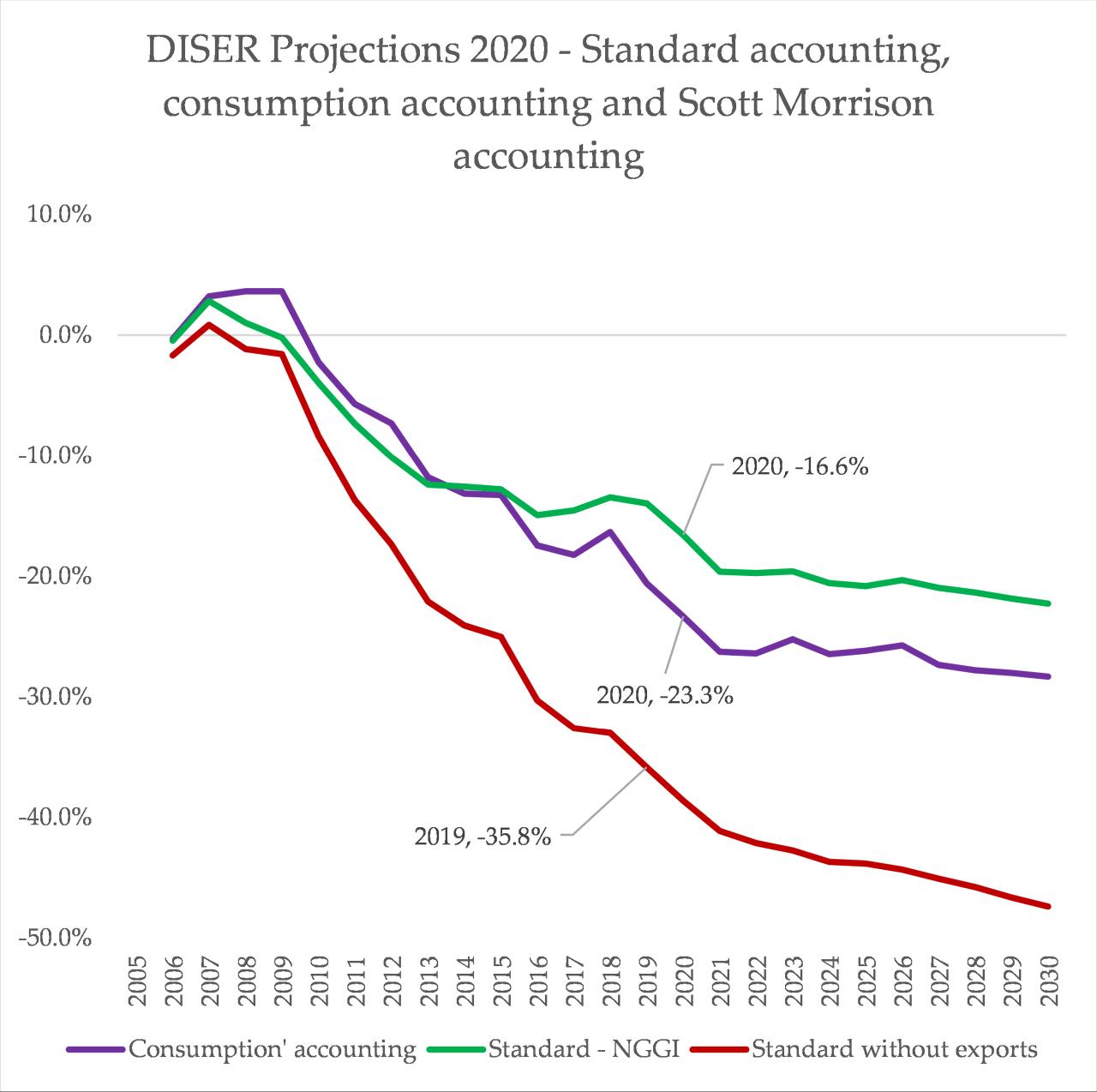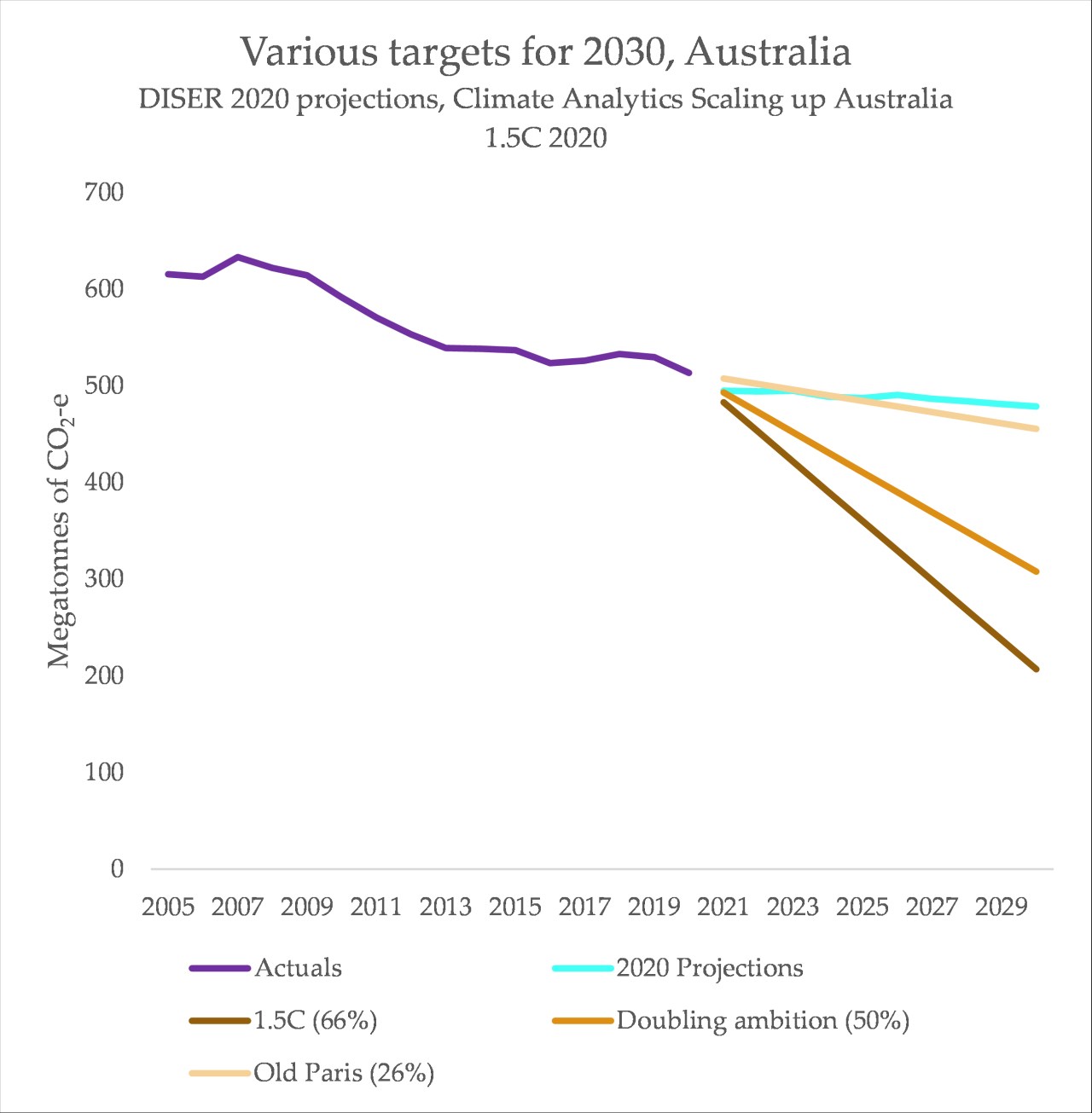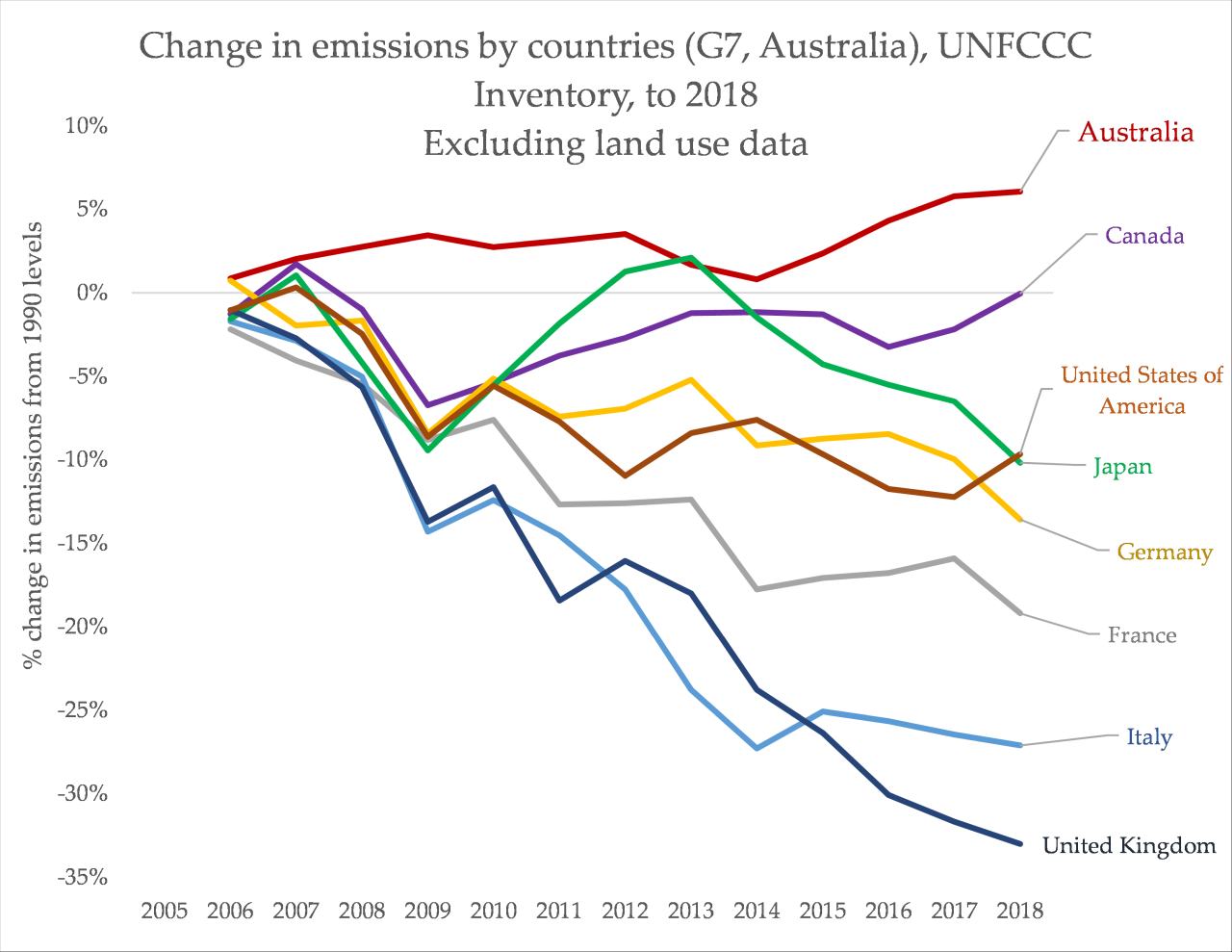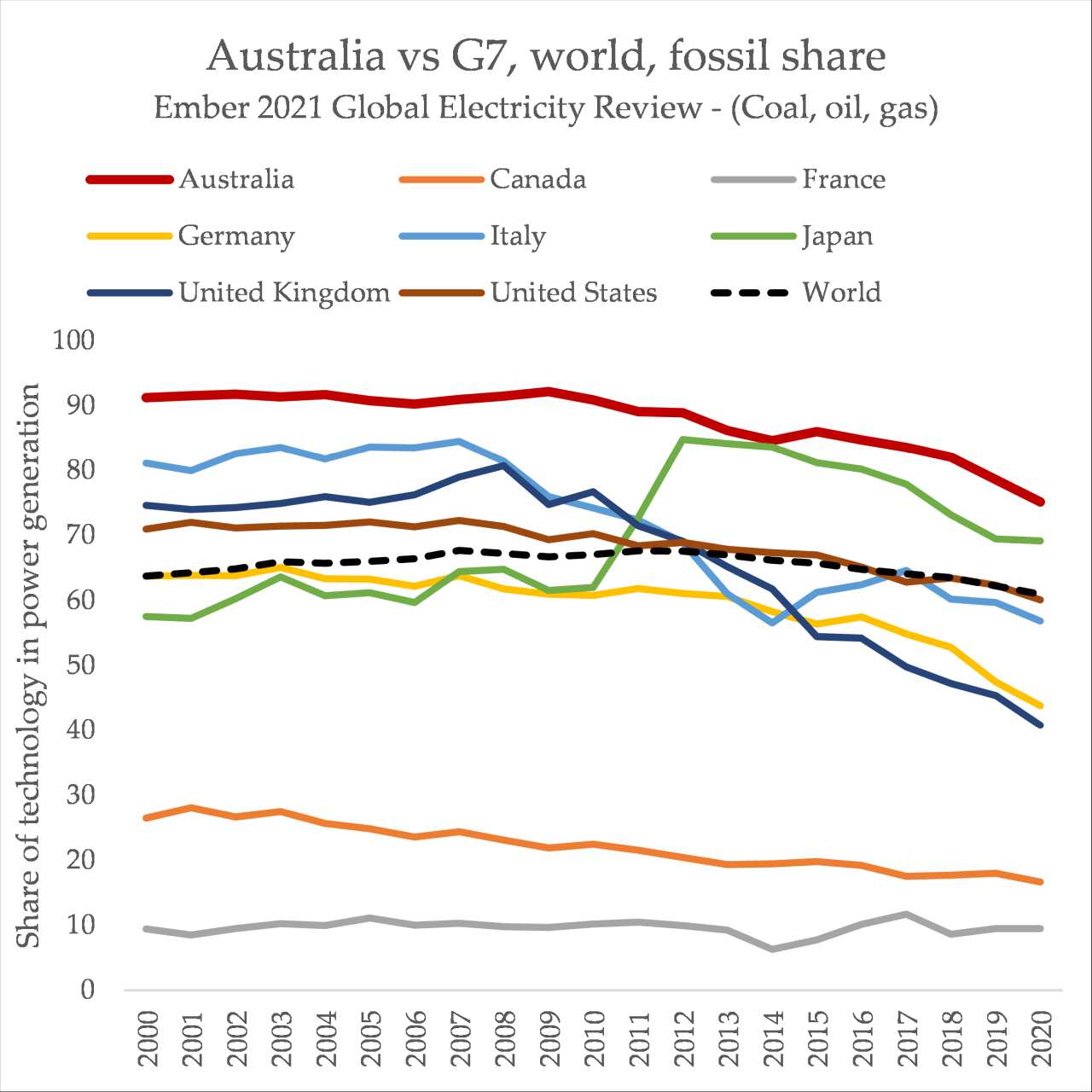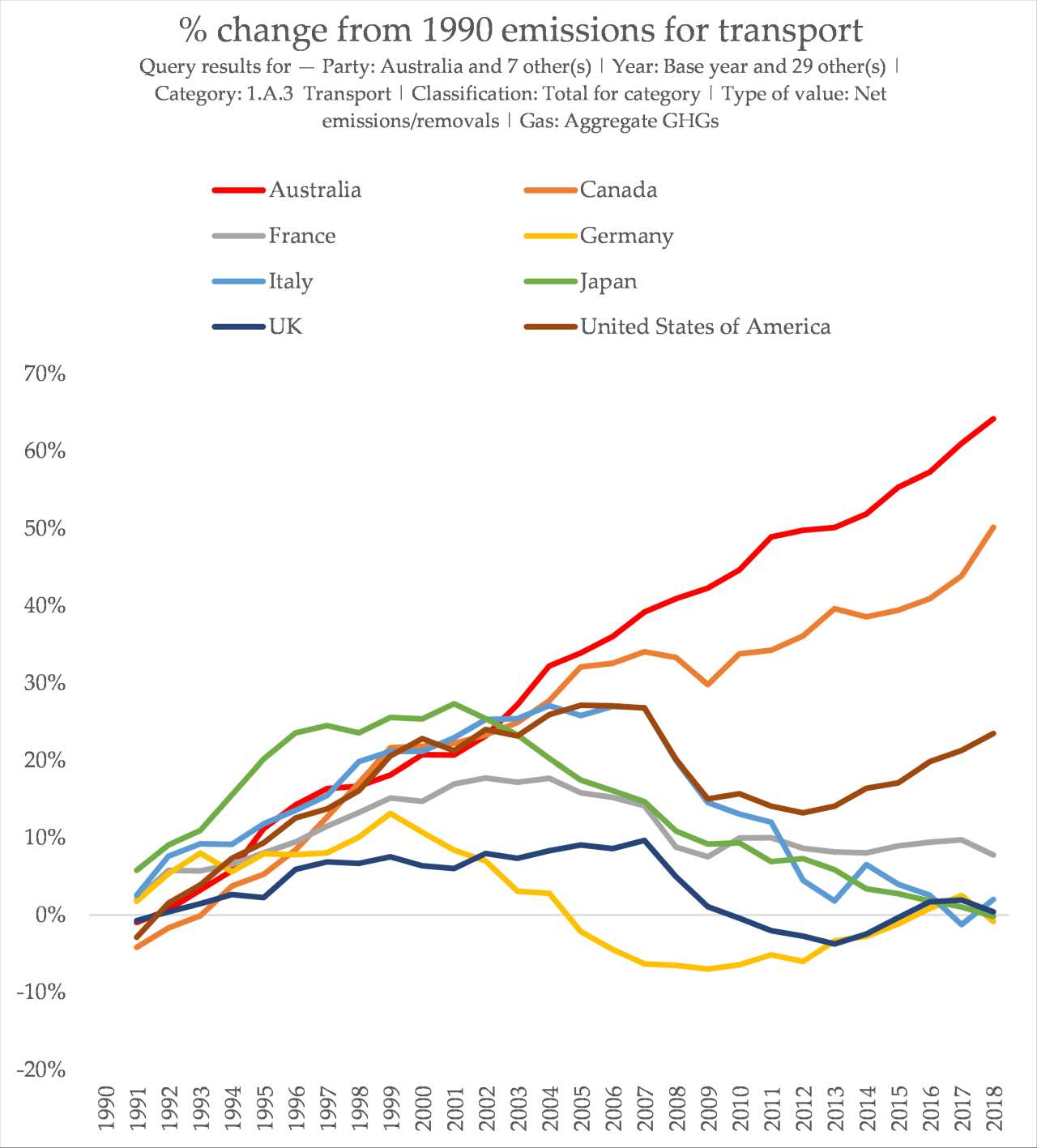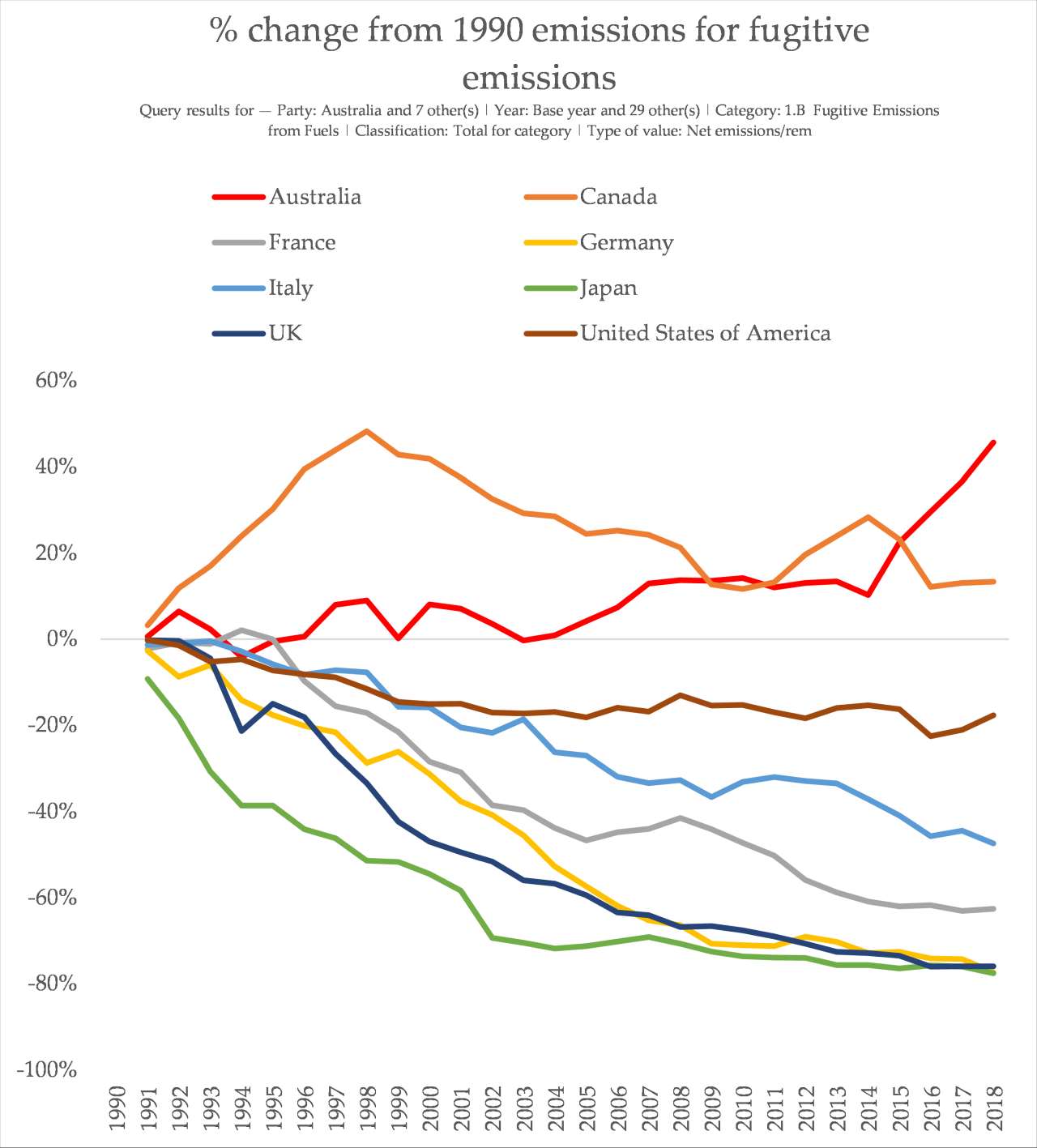This week, prime minister Scott Morrison will be reconnecting with a topic he has been struggling to disconnect from entirely: the problem of climate change.
This happens mostly through a single frame: presenting Australia’s current inaction on climate change as if it is true ambition. The story, of course, is pretty ugly. Australia’s emissions have been rising for some time, tempered partially by the growth of renewable energy, but accelerated by a bloated and emissions intensive gas industry and by highly-polluting transport. Buildings, industry, agriculture and other mining remain heavily reliant on fossil fuels.
The overall picture: the government is relying on vestigial policies from a previous government and the impacts of a deadly pandemic to do all the work on climate.
Today, Scott Morrison will reportedly say in a speech ahead of the G7 that Australia is deploying renewables “three times faster than the USA, China and the EU”. It’s a vague claim that is impossible to verify, but it is also a classic example of the greenwashing of Australia’s fossil fuel problem. This year, the primary mission of saving face has been trying to twist Australia’s climate and energy data in incredibly silly ways, such that is resembles climate ambition. I have tracked it closely, because it certainly seems like one of the most important stories on climate in Australia this year.
The first instance was the election campaign of Australia’s former finance minister and now successful new Secretary-General of the Economic Co-operation and Development (OECD), Mathias Cormann. He carried around a colour coded spreadsheet that has never been publicly shared, but that we can comfortably assume was not a fair representation of climate action, given it showed that “Australia’s performance stood up well against some other [OECD] members”.
Then, there was the April ‘Climate Leadership Summit‘, convened by Joe Biden and attended by Scott Morrison and Angus Taylor, both looking exhausted and exasperated.
The same attitude will be brought to the G7 meeting, to be held this Friday and into the coming weekend. Belligerence, reproach, and – most of all – a heavy-handed effort to greenwash Australia’s climate failures. With that in mind, it’s worth revisiting some of the most frequently used, so you can learn to spot them when they show up.
I’ll be adding to these as they come up, so this post can serve as something of a repository of greenwashing tricks sorted into clear categories.
Dodgy Comparisons
The goal for these is to make Australia look far better relative to other countries in the world, in terms of combating climate change, or in terms of the level of ambitions of its targets. This is done by:
- Referring to targets as ‘per capita‘; deceptive because Australia’s coming off a base of incredibly high per-capita emissions, which makes the percentage change look ‘steeper’ relative to other countries.
- Not using like-for-like comparisons. For example, including ‘land use’ sectors for Australia, but not for countries it’s being compared to.
Quite wild how much Aus defenders of fossil fuels rely on land use data fudges. Exclude it (and you should: it's measured differently between countries and revised massively every year) and the story is clear: Aus emissions have been rising since 2014https://t.co/iRheupzWgn pic.twitter.com/6WYQk2LhGx
— Ketan Joshi (@KetanJ0) April 27, 2021
Historical fudging
- The newest tactic here is what I’ve described as a the ‘Morrison Method‘ – this arbitrarily excludes nearly half of Australia’s total domestic emissions, purely because they’re coming from activities to prepare products for export out of Australia. To keep it brief: this is pure, crystal-cut absurdity and should be considered deeply embarrassing. But it does make Australia’s emissions look very much like they’re falling rapidly:
- An older tactic is presenting Australia’s historical emissions as ‘per capita’ rather than absolute emissions. Again, a drop from a very high base looks steep – but Australia remains the highest in the OECD even in per capita terms.
Future fudging
- One of the worst, in my view. And also the least challenged yet most frequently repeated. The claim that Australia is ‘on track’ to ‘meet and beat’ its Paris targets. It is not.
- Not engaging with the insufficiency of Australia’s 2030 climate targets, which are set far too low – Australia’s emissions projections each year creep a little closer to the targets. Ultimately, this simply means the targets need to be lifted. That is the entire purpose of their existence: to encourage ambition above and beyond what is default.
- Scott Morrison claims that he intends to reach net zero emissions “as soon as possible” and “preferably” by 2050. But his policies show that up as completely insincere: at the current projected rate of emissions reductions, Australia will reach zero by around 2294.
Credit stealing
- Australia’s renewable energy industry has grown dramatically since it first emerged in the mid 2000s. Rooftop solar, in particular, is world-leading. But this was seeded by a policy from the previous government, the Labor party, and directly and aggressively opposed at the time by the current government. In effect, they are taking credit for their own failure to stop renewable energy growth. It’s cynical.
- Australia’s emissions have dropped due to the impacts of COVID19 – mentioned in the report, but pointedly left out of tweets and images from Australian government representatives.
Technological exaggeration
- Australia’s renewable energy growth has been significant, but it hasn’t been significant enough to knock Australia off the leaderboard for reliance on coal-fired power. In 2020, Australia officially generated more coal-fired power than Germany, a country with 3x the population. And as the RET winds down and connection and planning issues arise, the prospect of a leadership-void induced renewable slowdown is real.
- Australia’s conservative government has been using the empty promise of technologies like hydrogen and carbon capture for decades, to fend off criticism of climate inaction. These pleas hang perpetually in the air but are never, ever realised – a tool to delay short-term action through a perpetual production line of future promise. And it’s this that forms the basis of the governments entire climate policy narrative: the “technology roadmap”.
Every dial is moving in the wrong direction
Here are some very simple facts you can keep in mind, in the lead-up to the G7:
Australia’s rise in fossil emissions are rising faster than all G7 countries (source):
Australia’s reliance on coal and gas-fired power is worse than all G7 countries (source):
Australia’s transport emissions are rising faster than all G7 countries (source):
Australia’s fugitive emissions – from mining coal and gas – are rising faster than all G7 countries:
Australia’s in a very, very bad position. The growth of renewables is slowing, and even when it wasn’t, it was barely balancing out the rising emissions from transport and fugitive emissions from fossil fuel mining.
The only real prospects of rapid emissions reductions at the moment come from chaos: from a messy and rapid shutdown of coal plants due to plummeting wholesale prices and flexibility requirements. Or, it could come from plummeting demand for Australia’s fossil exports, which would cause those companies – most of which donate generously to both major parties – to demand bailouts and handouts.
In the government’s view, an unplanned, chaotic, destructive and denialist pathway to 2050 is the preferable one. Anything to avoid acknowledging urgency and acting decisively. Morrison’s reproachful and dismissive tone on climate has not changed since he took office, or since the days of the bushfires. But every physical dial is moving in the wrong direction. The long, slow shrugging shuffle of the government cannot last forever: something has to give.

